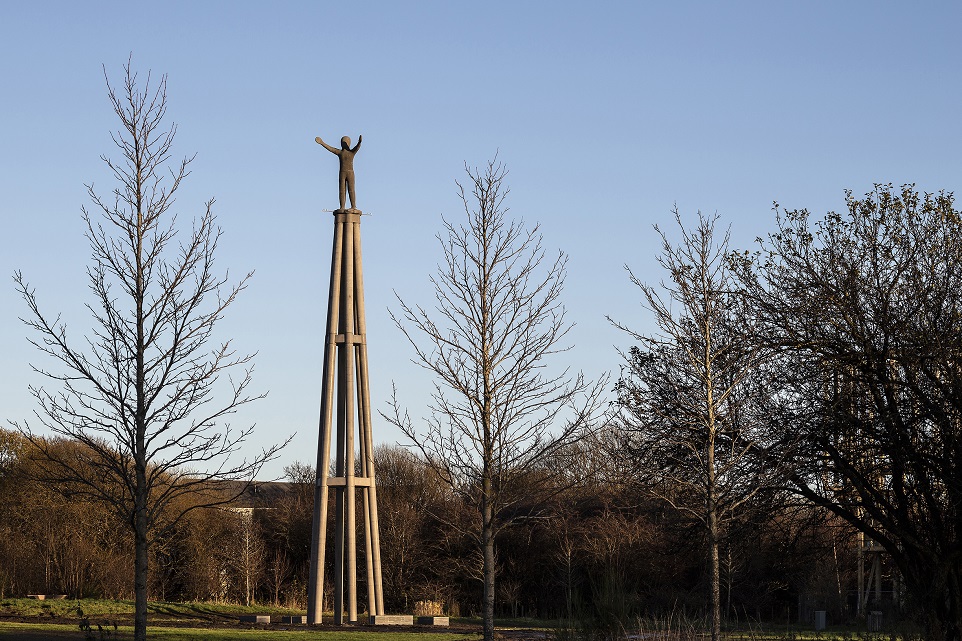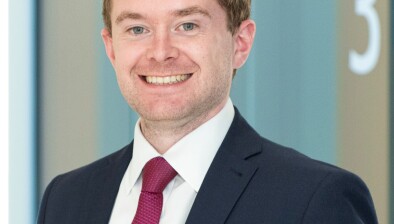Martin McKay: Glasgow’s newest sculpture is the perfect symbol of hope
Clyde Gateway executive director, Martin McKay, reveals why Glasgow’s newest sculpture, built using locally sourced materials, is the perfect symbol of hope.

The Hope Sculpture by Steuart Padwick (Image by Keith Hunter Photography)
Glasgow has no shortage of public art and the people who live in Scotland’s largest city are certainly not shy in sharing their opinions of them.
The Running Clock sculpture created by the late George Wyllie, the cube shaped clock atop of giant legs at Buchanan Bus Station, is just one of many sculptures that have sparked lots of opinion and conversation over the years but holds George Wyllie’s ethos of ‘art being for everyone’ at its heart.
This public critique is something we welcome and encourage as Glaswegians glimpse the newest edition to the East End skyline - the 23m high Hope Sculpture. It is located within the woodland park of Cuningar Loop, part of Clyde Gateway, Scotland’s biggest and most ambitious regeneration programme.
Visitors to Glasgow Central Station since COP26 will have noticed a smaller version of the public art installation, the 4.5m high timber Beacon of Hope and a third sculpture, the 3.5m high reclaimed sheet steel Hope Triptych to be found at the University of Strathclyde’s Rottenrow Gardens.
The artist and designer Steuart Padwick says the trio are “a testament to the power of collaboration and dedication to deliver a better future”. Padwick wants them to be beacons of hope and positivity towards reaching global environmental milestones and a reminder that we, as a society, do care about each other and our planet.
Glasgow’s art and its events are linked. People in the city have fond memories of hosting the 1988 Glasgow Garden Festival and the 2014 Commonwealth Games, and the Hope sculptures will serve as an important reminder that Glasgow welcomed the UN and the world in 2021.
One of the most appealing aspects of the art installation is that it is built using locally sourced materials designed to limit the amount of carbon produced by up to 75%. The construction industry has long been championing the use of modern methods of construction to transform how projects are delivered and this build is a showcase for offsite manufacturing that delivers greater efficiencies, higher quality, safer solutions and lower greenhouse gas emissions than traditional construction methods.

Martin McKay
The cement free concrete mix incorporates local Duntilland Dolerite aggregate and sand and the child includes recycled glass aggregate from Dryden Aqua, who recycle about a quarter of Scotland’s glass. Locally quarried Caithness stone forms the landscaping and benches.
Importantly, all lighting is soft, low energy and respectful of the environment and of local wildlife - something we have come to love at Cuningar Loop.
The sculpture also symbolises hope in terms of mental wellbeing - a facet I am particularly proud of because all of our work at Clyde Gateway has been people and community-focussed.
We have been working over the past decade to transform once derelict and inaccessible sites into new green spaces, designed to enhance community engagement, health, wellbeing and lifelong learning.
Alongside this our artists in residence have supported communities to engage in art in meaningful ways. Art and culture make places like Clyde Gateway distinctive.
The emerging art scene within Clyde Gateway also includes a new exhibition ‘Christmas Day Down a Goldmine: A New Seam’ featuring work by George Wyllie himself, together with seven distinct contemporary artists and runs until Christmas Eve, at the French Street Studios in Dalmarnock.
I recommend that you visit Clyde Gateway and take in some of the incredible art on offer and that you too are left with a feeling of hope of a positive future.

















